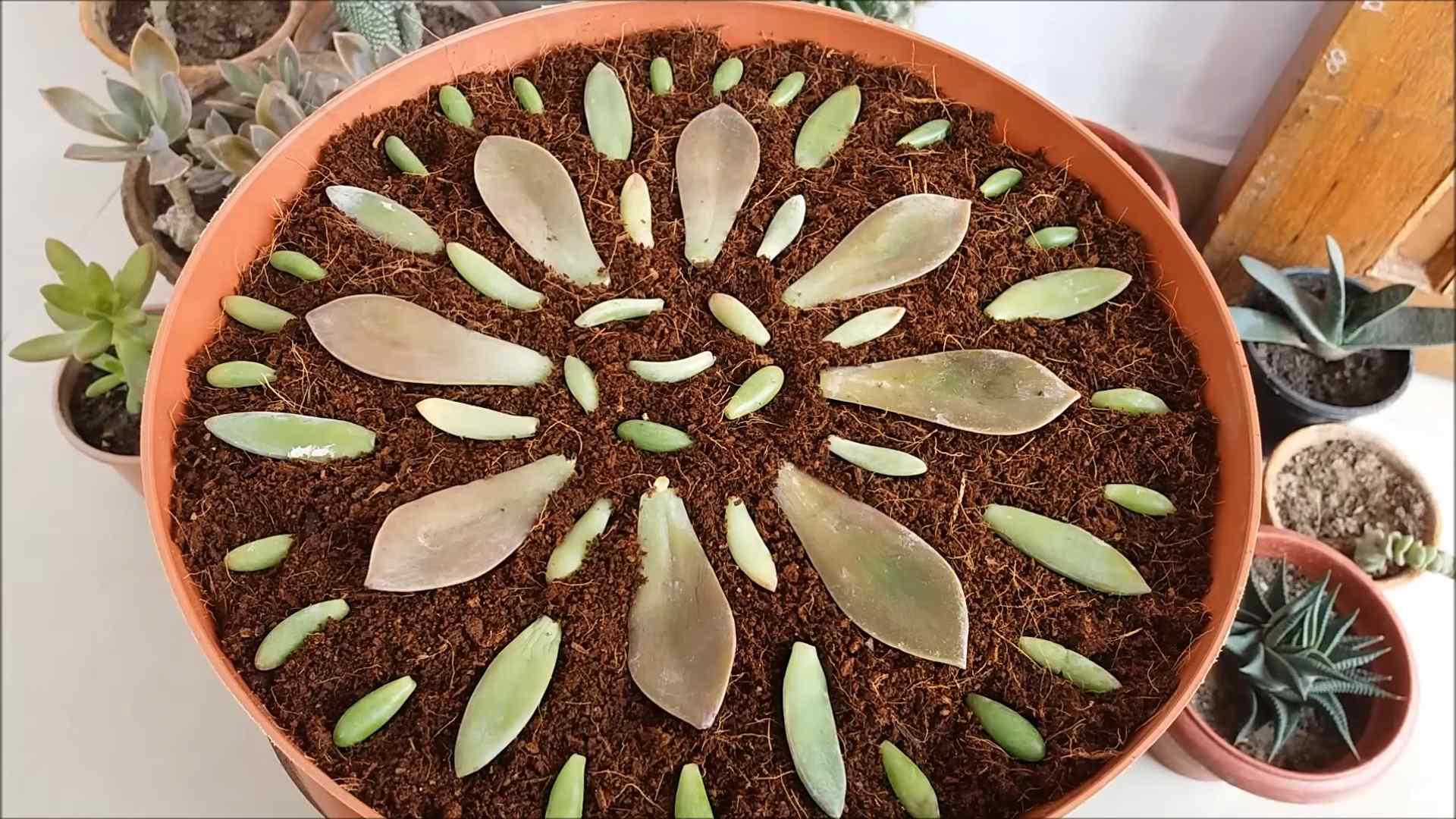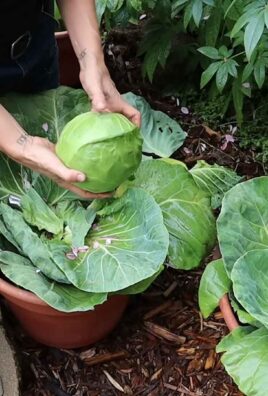Grow Violets Step by Step and unlock a world of vibrant color and delicate beauty right in your own home! Have you ever admired those charming little flowers, their velvety petals adding a touch of whimsy to gardens and windowsills? I know I have! For centuries, violets have captivated hearts, symbolizing love, modesty, and remembrance. From ancient Greece, where they were used in herbal remedies and adorned statues, to Victorian England, where they represented secret affections, these blooms boast a rich and fascinating history.
But beyond their romantic allure, violets are surprisingly easy to cultivate, even for beginners. That’s where this DIY guide comes in! I’m going to walk you through every stage, from selecting the perfect variety to troubleshooting common problems. In today’s busy world, finding moments of peace and connection with nature is more important than ever. Growing your own violets offers a therapeutic escape, a chance to nurture something beautiful, and a rewarding sense of accomplishment. Plus, imagine the joy of gifting a pot of homegrown violets to a friend or loved one! So, let’s dive in and discover how to grow violets step by step, transforming your living space into a floral haven.

Growing Violets: A Step-by-Step Guide to Blooming Beauty
Hey there, fellow plant enthusiasts! I’m so excited to share my secrets to successfully growing violets. These delicate beauties can brighten up any space with their charming blooms and velvety leaves. Don’t be intimidated – with a little know-how, you can have your own thriving violet collection. Let’s dive in!
Choosing Your Violet
Before we get our hands dirty, let’s talk about selecting the right violet. There are tons of varieties, each with its own unique charm.
* Leaf Type: Look for healthy, vibrant green leaves. Avoid plants with yellowing, spotting, or damaged foliage.
* Bloom Color: Violets come in a rainbow of colors – purple, pink, white, blue, and even bi-colors! Choose a color that speaks to you.
* Plant Size: Consider the space you have available. Violets come in standard, miniature, and semi-miniature sizes.
* Variety: Explore different varieties like ‘Optimara Millennia’, ‘Ness’ Orange Pekoe’, or ‘Rhapsodie Claudia’ to find your favorites. Each variety has slightly different care requirements, so do a little research!
* Check for Pests: Carefully inspect the plant for any signs of pests like mealybugs or aphids. Prevention is key!
Preparing Your Violet’s Home
Violets are a bit picky about their environment, but don’t worry, I’ll walk you through it.
* Potting Mix: Regular potting soil is a no-go for violets. They need a light, airy mix that drains well. I recommend a mix specifically formulated for African violets. You can also make your own by combining equal parts peat moss, perlite, and vermiculite.
* Pot Size: Violets prefer to be slightly root-bound, so choose a pot that’s only slightly larger than the root ball. A 4-inch pot is usually a good starting point for a standard-sized violet.
* Pot Material: Plastic pots are generally preferred because they retain moisture better than clay pots. However, if you’re prone to overwatering, a clay pot might be a better choice. Make sure your pot has drainage holes!
* Location, Location, Location: Violets thrive in bright, indirect light. An east-facing window is ideal. Avoid direct sunlight, which can scorch the leaves. If you don’t have a suitable window, you can use grow lights.
Planting Your Violet
Now for the fun part – getting your violet settled into its new home!
1. Prepare the Pot: Place a small amount of potting mix in the bottom of the pot.
2. Remove the Violet from its Original Container: Gently loosen the violet from its original container. If it’s root-bound, gently tease the roots apart.
3. Position the Violet: Place the violet in the center of the pot, making sure the top of the root ball is level with the top of the pot.
4. Add Potting Mix: Fill in the pot with potting mix, gently pressing down around the edges.
5. Water Thoroughly: Water the violet thoroughly until water drains out of the drainage holes.
Watering Your Violet
Watering is where many violet owners struggle, but I’ve got some tips to help you nail it.
* Watering Method: Avoid getting water on the leaves, as this can cause spotting. The best way to water violets is from the bottom. Place the pot in a saucer filled with water and let it soak for about 30 minutes. Then, remove the pot and let the excess water drain.
* Water Temperature: Use room-temperature water. Cold water can shock the plant.
* Watering Frequency: Water when the top inch of soil feels dry to the touch. Don’t let the soil dry out completely, but also avoid overwatering. Overwatering can lead to root rot.
* Water Quality: Use filtered or distilled water if possible. Tap water can contain chemicals that can harm violets.
Feeding Your Violet
Violets are hungry plants, so regular feeding is essential for healthy growth and abundant blooms.
* Fertilizer Type: Use a fertilizer specifically formulated for African violets. These fertilizers are typically higher in phosphorus, which promotes blooming.
* Fertilizer Strength: Dilute the fertilizer to half strength. Violets are sensitive to over-fertilization.
* Fertilizer Frequency: Fertilize every 2-4 weeks during the growing season (spring and summer). Reduce or stop fertilizing during the dormant season (fall and winter).
* Application Method: Add the diluted fertilizer to the water when you water your violet.
Grooming Your Violet
Regular grooming will keep your violet looking its best and promote healthy growth.
* Remove Dead Leaves: Remove any dead or yellowing leaves promptly. This will prevent the spread of disease and improve the plant’s appearance.
* Remove Spent Blooms: Remove spent blooms to encourage the plant to produce more flowers.
* Rotate the Plant: Rotate the plant regularly to ensure even growth. This will prevent the plant from leaning towards the light.
* Dust the Leaves: Gently dust the leaves with a soft brush or cloth to remove dust and debris. This will help the plant to photosynthesize more efficiently.
Troubleshooting Common Violet Problems
Even with the best care, you might encounter some problems. Here’s how to deal with them:
* Yellowing Leaves: This can be caused by overwatering, underwatering, or nutrient deficiencies. Adjust your watering and fertilizing practices accordingly.
* Brown Spots on Leaves: This is often caused by water getting on the leaves. Avoid getting water on the leaves when watering.
* Lack of Blooms: This can be caused by insufficient light, improper fertilization, or temperature fluctuations. Make sure your violet is getting enough light and is being fertilized properly.
* Mealybugs: These pests look like tiny cotton balls. Remove them with a cotton swab dipped in rubbing alcohol.
* Aphids: These pests are small and green. Wash them off with a strong stream of water or spray with insecticidal soap.
* Root Rot: This is caused by overwatering. Repot the violet in fresh potting mix and be careful not to overwater.
Propagating Your Violet
Want more violets? Propagating them is easier than you think!
* Leaf Cuttings: This is the most common method of propagation.
1. Select a healthy leaf from the middle of the plant.
2. Cut the leaf stem (petiole) at a 45-degree angle, about 1-2 inches from the leaf.
3. Insert the leaf stem into a small pot filled with moist vermiculite or perlite.
4. Cover the pot with a plastic bag or dome to create a humid environment.
5. Place the pot in a bright, indirect light location.
6. Keep the vermiculite or perlite moist.
7. In a few weeks, you should see new plantlets forming at the base of the leaf.
8. Once the plantlets are large enough to handle, carefully separate them from the mother leaf and pot them up individually.
* Crown Cuttings: This method is used to propagate violets with multiple crowns.
1. Carefully separate a crown from the main plant, making sure it has its own roots.
2. Pot the crown up in a small pot filled with violet potting mix.
3. Water thoroughly.
4. Place the pot in a bright, indirect light location.
Creating the Perfect Environment
Violets are sensitive to their environment, so creating the right conditions is crucial for their health and happiness.
* Temperature: Violets prefer temperatures between 65°F and 75°F (18°C and 24°C). Avoid exposing them to drafts or sudden temperature changes.
* Humidity: Violets thrive in humid environments. If your home is dry, you can increase the humidity by placing the pot on a tray filled with pebbles and water, using a humidifier, or grouping your violets together.
* Air Circulation: Good air circulation is important to prevent fungal diseases. Make sure your violets are not crowded together and that there is adequate airflow around them.
Repotting Your Violet
Repotting is necessary every year or two to refresh the soil and provide the plant with more room to grow.
1. Choose a New Pot: Select a pot that’s slightly larger than the current pot.
2. Prepare the Potting Mix: Use fresh violet potting mix.
3. Remove the Violet from its Old Pot: Gently loosen the violet from its old pot.
4.

Conclusion
So, there you have it! Growing violets doesn’t have to be an intimidating endeavor. With a little patience and this simple, step-by-step guide, you can cultivate a thriving collection of these charming blooms right in your own home. This DIY approach not only saves you money compared to buying mature plants, but it also gives you the immense satisfaction of nurturing life from the very beginning. The vibrant colors and delicate fragrance of your homegrown violets will undoubtedly brighten any space and bring a touch of nature indoors.
But why is this DIY method a must-try? Because it empowers you to control every aspect of your violet’s environment, from the soil composition to the lighting conditions. This level of control translates to healthier, more resilient plants that are better equipped to flourish. Plus, propagating your own violets allows you to expand your collection exponentially, sharing the joy of these beautiful flowers with friends and family.
Consider these variations to personalize your violet-growing experience:
* Experiment with different potting mixes: While the recommended mix works well, you can adjust the proportions of peat moss, perlite, and vermiculite to find what works best for your specific environment and watering habits. Some growers prefer a slightly more acidic mix, while others find that a more airy mix promotes better drainage.
* Explore different violet varieties: The world of violets is vast and diverse, with countless cultivars boasting a rainbow of colors, petal shapes, and leaf patterns. Don’t limit yourself to just one type! Try growing a few different varieties to create a visually stunning display.
* Get creative with your containers: While standard pots work perfectly well, you can also use repurposed containers like teacups, mugs, or even decorative tins to add a touch of whimsy to your violet collection. Just be sure that your chosen container has adequate drainage.
* Try wick watering: For those who struggle with consistent watering, wick watering can be a game-changer. This method involves placing a wick (usually made of nylon or acrylic yarn) through the drainage hole of the pot and into a reservoir of water. The wick draws water up into the soil as needed, preventing both overwatering and underwatering.
We wholeheartedly encourage you to embark on this rewarding journey of growing violets from scratch. It’s a surprisingly simple and incredibly fulfilling experience. Once you’ve successfully propagated your own violets, we’d love to hear about your journey! Share your experiences, tips, and photos in the comments below. Let’s create a community of violet enthusiasts and inspire others to discover the joy of growing these delightful flowers. Remember, the key to success is patience, observation, and a genuine love for these beautiful plants. Happy growing!
Frequently Asked Questions (FAQ)
What is the best type of soil for growing violets?
The ideal soil for violets is a well-draining, slightly acidic mix. A common blend consists of equal parts peat moss, perlite, and vermiculite. This combination provides the necessary moisture retention while ensuring adequate aeration to prevent root rot. Avoid using garden soil, as it tends to be too heavy and compact, which can suffocate the roots. You can also purchase pre-made violet potting mixes from most garden centers.
How much light do violets need?
Violets thrive in bright, indirect light. Direct sunlight can scorch their delicate leaves, so it’s best to place them near an east- or west-facing window where they receive filtered sunlight. If you’re growing violets indoors, you may need to supplement natural light with artificial grow lights, especially during the winter months. A fluorescent grow light placed about 12-18 inches above the plants for 12-14 hours a day can provide adequate illumination. Signs of insufficient light include leggy growth, pale leaves, and a lack of blooms.
How often should I water my violets?
Watering violets correctly is crucial for their health. The key is to keep the soil consistently moist but not soggy. Water when the top inch of soil feels dry to the touch. Avoid getting water on the leaves, as this can lead to fungal diseases. The best way to water violets is from the bottom. Place the pot in a saucer of water and allow the plant to absorb the water through the drainage holes for about 30 minutes. Then, remove the pot from the saucer and let any excess water drain away. Alternatively, you can use a watering can with a long, narrow spout to water the soil directly, being careful not to splash the leaves.
What are some common problems that affect violets, and how can I fix them?
Violets are generally easy to care for, but they can be susceptible to certain problems. Overwatering is a common issue that can lead to root rot. If you notice that the leaves are wilting or turning yellow, and the soil is constantly wet, you’re likely overwatering. Allow the soil to dry out completely before watering again, and consider repotting the plant in fresh, well-draining soil. Pests like mealybugs and aphids can also infest violets. These pests can be controlled with insecticidal soap or neem oil. Fungal diseases, such as powdery mildew, can occur in humid conditions. Improve air circulation around the plants and treat with a fungicide if necessary.
How do I encourage my violets to bloom?
To encourage your violets to bloom, provide them with the right conditions: bright, indirect light, consistent moisture, and regular fertilization. Use a balanced fertilizer specifically formulated for violets, following the instructions on the label. Deadhead spent flowers regularly to encourage the plant to produce more blooms. Also, make sure the temperature is within the ideal range of 65-75°F (18-24°C). Avoid exposing your violets to drafts or sudden temperature changes.
Can I propagate violets from leaf cuttings?
Yes, propagating violets from leaf cuttings is a simple and effective way to create new plants. Select a healthy, mature leaf from the center of the plant. Cut the leaf stem (petiole) at a 45-degree angle, about 1-2 inches from the leaf. Insert the cut end of the petiole into a small pot filled with moistened violet potting mix. You can also dip the cut end in rooting hormone to encourage faster root development. Cover the pot with a plastic bag or dome to create a humid environment. Place the pot in a warm, bright location, but out of direct sunlight. After a few weeks, roots will begin to form, and new plantlets will emerge at the base of the leaf. Once the plantlets are large enough to handle, you can carefully separate them from the mother leaf and pot them individually.
How often should I fertilize my violets?
Violets benefit from regular fertilization, especially during the growing season (spring and summer). Fertilize every 2-4 weeks with a balanced fertilizer specifically formulated for violets. Follow the instructions on the label carefully, as over-fertilizing can damage the plants. During the dormant season (fall and winter), reduce fertilization to once every 6-8 weeks.
What is the ideal temperature for growing violets?
Violets prefer a temperature range of 65-75°F (18-24°C). Avoid exposing them to temperatures below 60°F (15°C) or above 80°F (27°C). Sudden temperature changes can also stress the plants and inhibit blooming.
Why are my violet leaves turning yellow?
Yellowing leaves can be a sign of several problems, including overwatering, underwatering, nutrient deficiencies, or pest infestations. Check the soil moisture to determine if you’re watering correctly. If the soil is constantly wet, you’re likely overwatering. If the soil is bone dry, you’re underwatering. If the watering is correct, consider fertilizing the plant to address any nutrient deficiencies. Inspect the leaves carefully for signs of pests. If you find any pests, treat with insecticidal soap or neem oil.
My violets are not blooming. What can I do?
There are several reasons why your violets might not be blooming. Insufficient light is a common cause. Make sure your violets are receiving bright, indirect light. Another reason could be improper watering. Ensure you are watering correctly, allowing the top inch of soil to dry out before watering again. Lack of nutrients can also prevent blooming. Fertilize regularly with a balanced violet fertilizer. Finally, make sure the temperature is within the ideal range of 65-75°F (18-24°C). Deadheading spent flowers can also encourage more blooms.





Leave a Comment